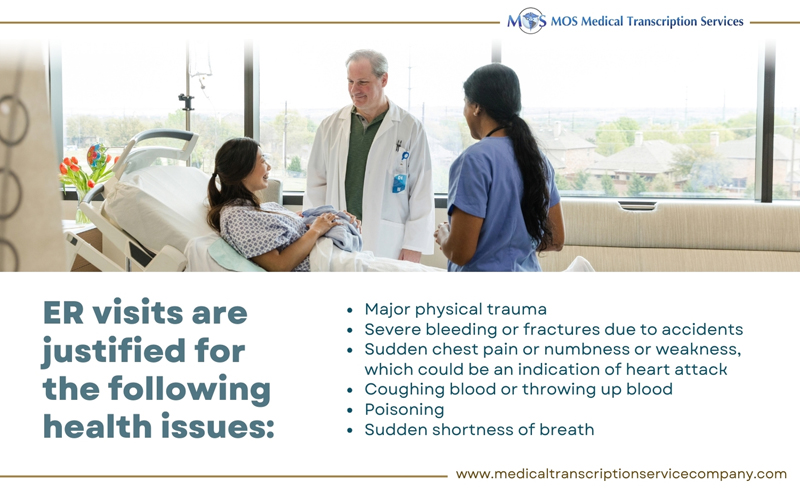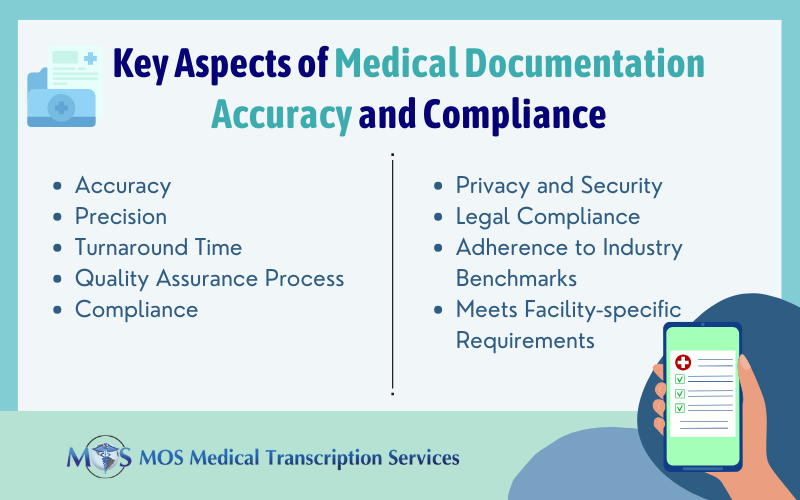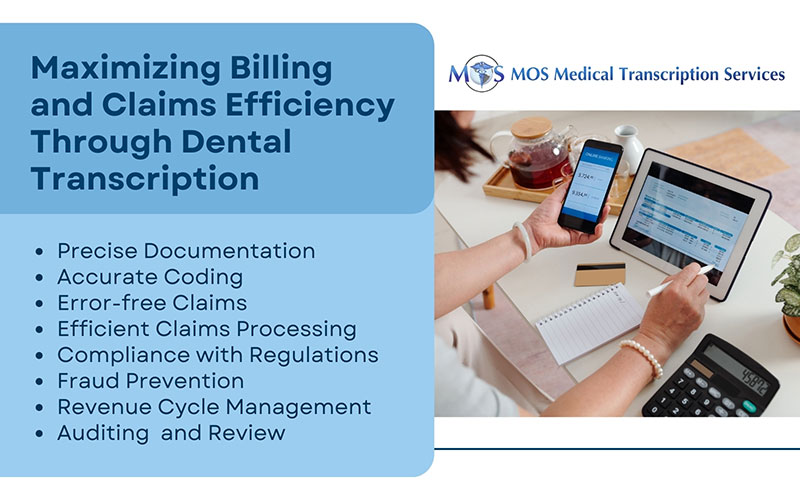
Table of Contents
Working in the emergency room (ER) can be quite stressful, requiring constant attention and caution to ensure that patients receive the best possible care. Ensuring proper documentation is a critical but draining task. The aims of emergency room documentation are to summarize and communicate the patient’s ER visit effectively. This would mean covering all the important details like history, physical exam, review of systems, social and family history, medications, and allergies. It is also necessary to list any consultations, interpret lab and X-ray results, and document clinical decision-making, next steps, discharge instructions (if needed), new prescriptions, and the plan for follow-up care. Many ER physicians choose to outsource the documentation task to a medical transcription company to reduce stress and save time.
Most emergency rooms are overcrowded and understaffed and it is important that unnecessary ER visits are reduced.
Preventable ER Visits are on the Rise
What is a preventable emergency room visit? It is when a patient visits an ER for a health condition that could have been treated in a non-emergency setting or prevented by helping the patient maintain his/her health earlier on.
The Centers for Medicare and Medicaid Services (CMS) strongly recommends that reducing unnecessary emergency department (ED) visits should be a goal of all primary care and specialty practices. “Unnecessary ED visits burden the health care system as they are costly and consume resources that other individuals with more acute needs may need”, notes CMS.
The Agency for Healthcare Research and Quality (AHQA) has stated that nearly half of EDs report operating at or above capacity, and 9 out of 10 hospitals report holding or “boarding” admitted patients in the ED while they await inpatient beds.
According to a study published in JAMA Network Open, there was a significant increase in the number of potentially preventable ED visits from 1.8 million to 3.2 million during the period from 2012 to 2019. Pain (36.9%) was the most common reason for the potentially preventable ED visits among adults with cancer. The researchers noted that more than 50% of these more than half of ED visits potentially could have been prevented. The study highlights the need for evidence-based interventions to better manage cancer treatment complications.
Given that treatment in an ER is typically more expensive than a primary care visit, people should be encouraged to avoid unnecessary ER visits. However, patients experiencing a medical emergency should seek emergency care.
Tackling Unnecessary ER Visits
To tackle the problem of unnecessary visits to the emergency department proactively, a practice can work on gaining a better understanding of their patient population. This involves anticipating and addressing the reasons why patients might end up in the emergency room.
In the case of non-emergent issues, the primary reasons for ER visits are often related to accessibility challenges. These include:
- Lack of a relationship with a primary care provider or care team
- Difficulties in accessing a provider after hours or in a timely manner, or
- transportation issues
- Insufficient chronic care management
- Gaps in coordinating care across multiple locations
The main reasons for ER crowding are, according to Dr. Rick Ludwig, Pacific Medical Centers’ Medical Director of U.S. Family Health Plan, the difficulty of finding a primary care physician and changing societal attitudes. Common unnecessary ER visits include those made by patients with respiratory infections, urinary tract infections, headache, and mild dizziness. If such non-emergent visits could be redirected to more appropriate medical caregivers, ER staff and resources could better handle the emergencies.
Pacific Medical Care Center recommends that if an incident occurs during after-hours, then the patient can make an initial call to someone at their facility to discuss their concerns. That discussion will help them determine whether the health concern can be dealt with at a clinic, whether it can wait till morning, or whether it is not an issue at all. In case of a medical emergency, the patient should call 911 and immediately visit the emergency room.
To avoid huge inflow of patients into the emergency room, Dr. Ludwig suggests that it is important to create awareness among patients. At the time of check-in, patients are given a card with the usual information on the front and a reminder about the clinic’s after-hour accessibility. At the time of checkout, patients are reminded about after-hour access. Pacific Medical Care Centre staff said they were surprised to understand that many people did not know they could access medical assistance even after-hours. That information has made them even more vigilant to let their patients know about such conveniences.
Emergency Room Visits: What Patients Should Know

Health issues like cold, flu, sore throat, minor cuts or burns that can be treated at home using self care measures or at a primary care clinic do not necessitate an ER visit.
Best Practices to Reduce Unnecessary ER Visits
Older cognitively impaired adults face an increased risk of hospitalization and mortality after emergency department visits, revealed by a BMJ Open study. To curb these incidents and related ED presentations in community-dwelling adults, a deeper understanding of avoidable incidents is crucial. The study identified five types – falls, burns, transport accidents, harm due to self-negligence, and wandering. Except for transport accidents, cognitively impaired seniors were more prone to the other four types. The study suggests multi-factorial interventions involving professionals like pharmacists and fire-fighters to reduce incidents. Primary research screening for cognitive impairment and involving paramedics is essential to comprehend avoidable incidents leading to ED visits, aiding in the development of tailored preventive measures for older cognitively impaired adults.
Unnecessary ED visits and hospitalizations are debilitating for cancer patients, but are very common and costly for the U.S. healthcare system. To help prevent such visits, researchers at the University of Pennsylvania’s Abramson Cancer Center, the Leonard Davis Institute of Health Economics, and the Wharton School identified 5 best practices:
- Identifying patients at high risk of unplanned acute care (unnecessary ED visits)
- Improving access and care coordination among health professionals
- Standardizing clinical pathways for symptom management
- Developing urgent cancer care tactics
- Employing early palliative care
These findings and recommendations of the study are published in the April 2018 issue of the Journal of Oncology Practice. Penn Medicine and the Abramson Cancer Center are already using some of these strategies and the results are promising. The Abramson Cancer Center has developed pathways that divert cancer patients from the ED to a more specialized urgent care clinic. Studies show that more than half of cancer patients who present at the ED are admitted to the hospital, often during normal clinical hours. As an alternative, the researchers suggest, developing sites that provide these patients an alternative to seek care.
Continued research into avoidable ER visits reveals their detrimental effects on specific patient communities and the escalation of healthcare costs. Healthcare providers, companies offering medical transcription services and other stakeholders, must recognize the importance of steering clear of unnecessary ER visits. As new payment models evolve in the healthcare landscape, physicians should prioritize efforts to minimize avoidable ER visits and patient hospitalizations.


